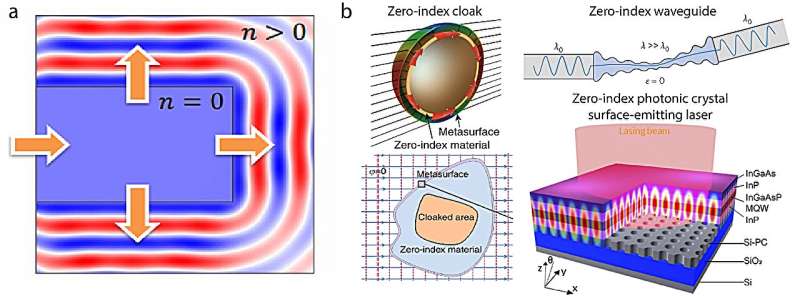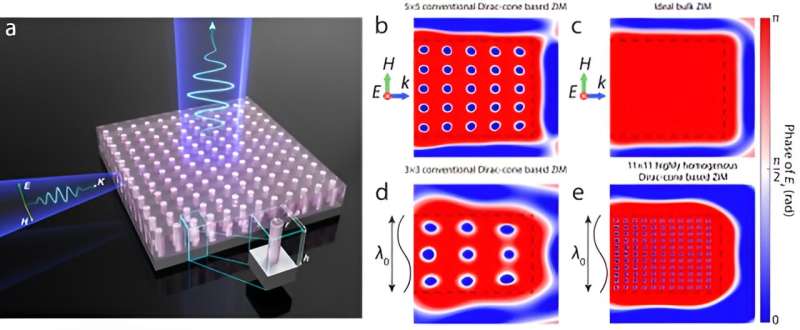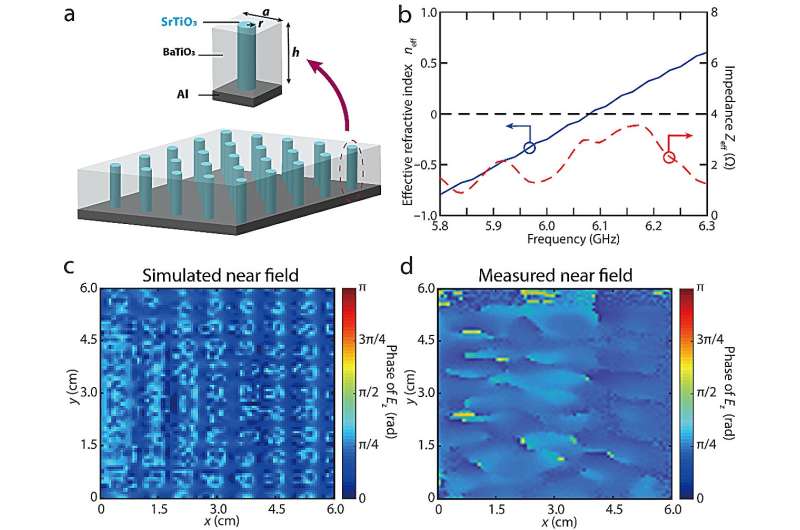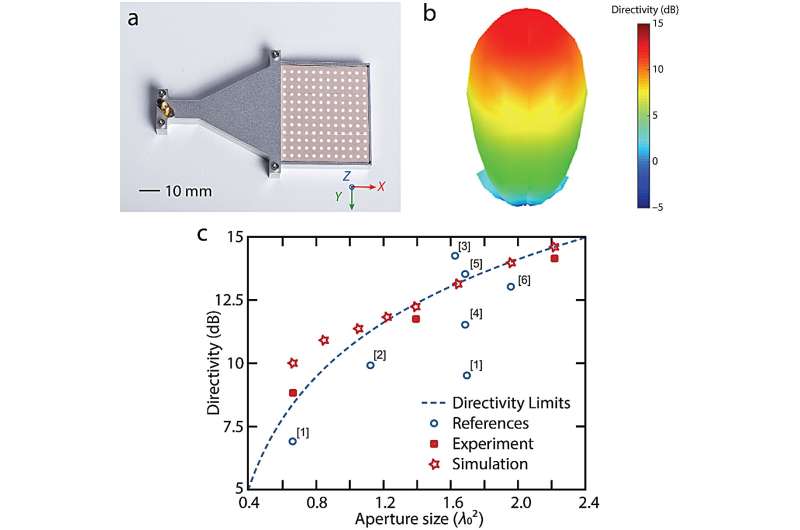
In the realm of materials science, electromagnetic (EM) metamaterials have emerged as a revolutionary class of engineered composites capable of manipulating electromagnetic waves in ways never before possible. Unlike their naturally occurring counterparts, EM metamaterials derive their extraordinary properties from their unique structural arrangements, allowing them to exhibit unattainable electromagnetic characteristics in conventional materials.
One of the most fascinating characteristics of EM metamaterials lies in the realm of zero-index metamaterials (ZIMs). ZIMs possess the remarkable ability to achieve uniform electromagnetic field distribution over arbitrary shape (Figure 1a). This unique property opens many potential applications, from ultra-compact cloaking devices to arbitrarily shaped waveguides and lenses and photonic crystal surface-emitting lasers (Figure 1b).
Despite their immense potential, ZIMs have faced a significant hurdle in their practical implementation. The homogeneity of ZIMs is often limited by the number of unit cells per free-space wavelength. This limitation arises from the low permittivities property of the materials used to construct ZIMs. As a result, ZIMs often require large physical space to achieve their effective electromagnetic properties (Figure 2b).

Researchers have overcome this longstanding challenge in a study published in eLight by developing a highly homogeneous ZIM using a novel combination of high-permittivity materials.
As shown in Figure 3a, by employing SrTiO3 ceramic pillars embedded in a BaTiO3 background matrix, they have successfully fabricated a ZIM with an over threefold increase in homogenization level (Figures 2b and 2e), significantly reducing its physical dimensions.

Based on the uniform distribution of the phase of electromagnetic field throughout the ZIM, researchers have demonstrated a high-directivity antenna. By incorporating ZIM in a metallic waveguide (Figure 4a), this antenna has approached the fundamental limitation of directivity in antenna as the aperture size varies from subwavelength regime to a very large scale (Figure 4c).

This breakthrough paves the way for a new era of ZIM-based devices, offering unprecedented performance and compactness. The researchers’ achievement has profound implications for a wide range of fields, including wireless communications, remote sensing, and global positioning systems. Moreover, their work opens up new possibilities for fundamental research in ultracompact waveguides, cloaking devices, and superconducting quantum computing.
More information: Yueyang Liu et al, High-permittivity ceramics enabled highly homogeneous zero-index metamaterials for high-directivity antennas and beyond, eLight (2024). DOI: 10.1186/s43593-023-00059-x
Journal information: eLight
Provided by TranSpread

